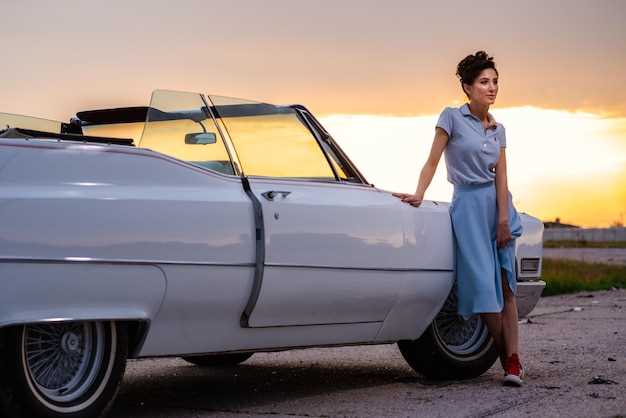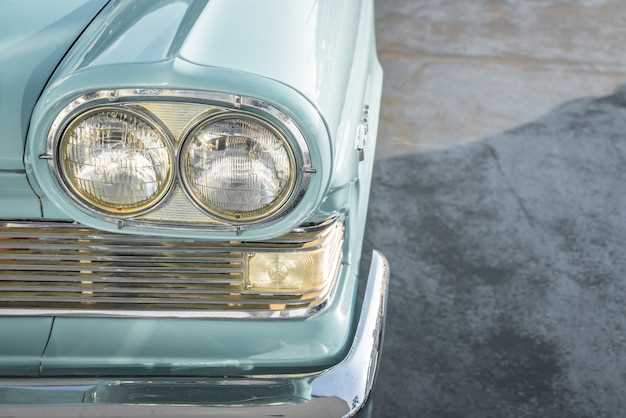
The world of classic car photography has seen a remarkable resurgence in recent years, fueled by the passion of enthusiasts who are eager to capture the timeless beauty of vintage automobiles. As the popularity of classic cars continues to rise, so too does the art of photographing them, evolving into a unique genre that attracts both seasoned professionals and budding photographers alike. This growing interest not only highlights the aesthetic appeal of these vehicles but also creates a platform for storytelling, nostalgia, and community engagement among car lovers.
In an age dominated by digital imagery, classic car photography trends have adapted and transformed, incorporating new techniques and technologies that enhance the visual experience. From meticulously staged shots showcasing the sleek lines of these vehicles against stunning backdrops to candid captures that evoke a sense of history, photographers are pushing the boundaries of creativity to engage enthusiasts and convey their love for cars in innovative ways. As social media platforms become increasingly saturated with car-related content, the demand for high-quality imagery has never been greater, propelling talented individuals to gain recognition and share their passion with a global audience.
This article will explore the latest trends in classic car photography, examining the techniques and styles that resonate most with enthusiasts. We’ll dive into the factors contributing to this burgeoning movement, highlighting the ways in which photographers capture not just the vehicles themselves, but the culture and community that surrounds them. As we unravel the intricacies of this art form, it becomes clear that the appeal of classic car photography reaches far beyond mere aesthetics, fostering connections and celebrating a shared love for automotive history.
Utilizing Natural Lighting for Authentic Classic Car Shots

When it comes to capturing the beauty of classic cars, the use of natural lighting is paramount. This approach not only highlights the intricate details of vintage automobiles but also evokes a sense of nostalgia and authenticity. To achieve the best results, photographers should be aware of the time of day, weather conditions, and the environment in which they are shooting.
Golden Hour is widely regarded as the optimal time for photography, including classic car shots. Occurring shortly after sunrise and before sunset, this period offers soft, warm light that enhances the curves and finishes of classic cars. During this time, shadows are longer and less harsh, allowing for a more even and flattering illumination.
The positioning of the sun plays a crucial role in creating impactful images. When shooting, angle the car to catch the light at a slight angle, which can emphasize the shiny surfaces and details. Backlighting can also be effective; by placing the sun behind the car, you can create a halo effect that adds depth and drama to the image.
Cloudy days present an excellent opportunity for classic car photography as well. The overcast sky acts as a natural diffuser, reducing harsh shadows and providing a soft, even light that captures the car’s features beautifully. Under these conditions, colors appear more saturated and true to life, highlighting the classic car’s paintwork and finer details.
Additionally, the choice of location is critical. A natural backdrop can complement the vehicle, enhancing the overall composition. Look for settings that feature elements like rustic roads, vintage architecture, or lush greenery, which can add context and depth to classic car shots.
In conclusion, utilizing natural lighting effectively can elevate classic car photography, producing images that resonate with authenticity and emotional appeal. By being mindful of light quality, positioning, and environmental context, photographers can create stunning visuals that celebrate the timeless allure of classic automobiles.
Incorporating Scenic Backdrops to Enhance Vintage Vehicle Aesthetics
In the realm of classic car photography, the choice of backdrop plays a crucial role in enhancing the overall aesthetics of vintage vehicles. Classic car enthusiasts understand that the right scenery not only complements the vehicle’s design but also tells a compelling story. Natural settings, urban environments, or iconic landmarks can significantly impact the mood and appeal of a photograph.
Natural landscapes, such as rolling hills, scenic coastlines, or rustic farmland, provide an organic frame that emphasizes the timelessness of classic cars. The interplay of light and shadows in these environments can create striking contrasts, making the vehicle stand out while harmonizing with its surroundings. For instance, a classic convertible parked under a sprawling oak tree evokes nostalgia, inviting viewers to imagine leisurely drives on sun-drenched afternoons.
Urban settings also offer unique opportunities for classic car photography. The juxtaposition of vintage vehicles against modern architecture highlights their historical significance and enduring charm. Sophisticated street art, vibrant cityscapes, or atmospheric alleyways can serve as dynamic backdrops that infuse a sense of character and vibrancy into the imagery. Capturing a classic car cruising down a bustling street not only showcases the vehicle but also emphasizes the vibrant culture it is part of.
Moreover, iconic landmarks provide a sense of location and context that can amplify a photograph’s storytelling elements. A classic car parked in front of a historic building or a famous monument connects the vehicle to its heritage and the historical narrative of the place. This technique appeals to both classic car enthusiasts and casual viewers, as it creates a visual link between the car and its cultural significance.
When selecting backdrops, photographers should consider aspects such as color palettes, textures, and the overall mood they wish to convey. A cohesive color scheme between the vehicle and its environment can create a visually pleasing image that draws the viewer’s attention. Whether aiming for a romantic sunset backdrop or the dynamic energy of a neon-lit city at night, the right choice can elevate a simple car photograph into a work of art.
In conclusion, the integration of scenic backdrops in classic car photography is essential for capturing the essence of vintage vehicles. By thoughtfully selecting environments that resonate with the car’s character, photographers can create compelling narratives that captivate enthusiasts and highlight the timeless appeal of classic automobiles.
Engaging with Online Communities to Share and Promote Classic Car Photography

In recent years, the digital landscape has transformed the way enthusiasts connect over their passion for classic cars and photography. Online communities dedicated to these timeless vehicles provide platforms for sharing stunning visuals and engaging discussions. To effectively promote classic car photography, photographers should consider several strategies within these digital spaces.
One of the most impactful approaches is to join dedicated forums and social media groups that focus on classic cars. Platforms like Facebook, Instagram, and specialized websites such as ClassicCars.com not only allow photographers to showcase their work but also to interact with fellow enthusiasts. Engaging with these communities helps build relationships and expand reach, as positive interactions often lead to more followers and increased interest in one’s portfolio.
Utilizing hashtags relevant to classic cars can further enhance visibility. For instance, hashtags like #ClassicCarPhotography, #VintageCars, and #CarEnthusiasts connect users to a wider audience actively searching for classic car content. Consistent use of these tags across platforms not only showcases the photographer’s niche but also invites engagement from individuals who share similar interests.
Another effective technique involves participating in challenges or collaborations within the community. Many groups host themed contests or photo walks, providing opportunities to showcase classic car photography while gaining recognition. Actively participating in these events fosters camaraderie and encourages photographers to improve their craft by receiving constructive feedback from their peers.
Moreover, sharing behind-the-scenes content can intrigue audiences and deepen their connection to the photographer’s work. Offering a glimpse into the process of capturing stunning shots can ignite discussions and inspire others within the classic car community. Whether revealing techniques or sharing personal stories about the cars being photographed, such content enhances relatability and engagement.
Finally, contributing valuable knowledge about classic cars through blog posts or tutorials within these communities positions photographers as experts in the field. By sharing insights on car restoration, maintenance, or the history of specific models, they not only showcase their expertise but also attract an audience interested in both classic cars and quality photography.
In summary, engaging with online communities dedicated to classic cars can significantly enhance the visibility and appeal of classic car photography. By actively participating, sharing quality content, and connecting with fellow enthusiasts, photographers can cultivate a loyal following and inspire others within this vibrant community.




